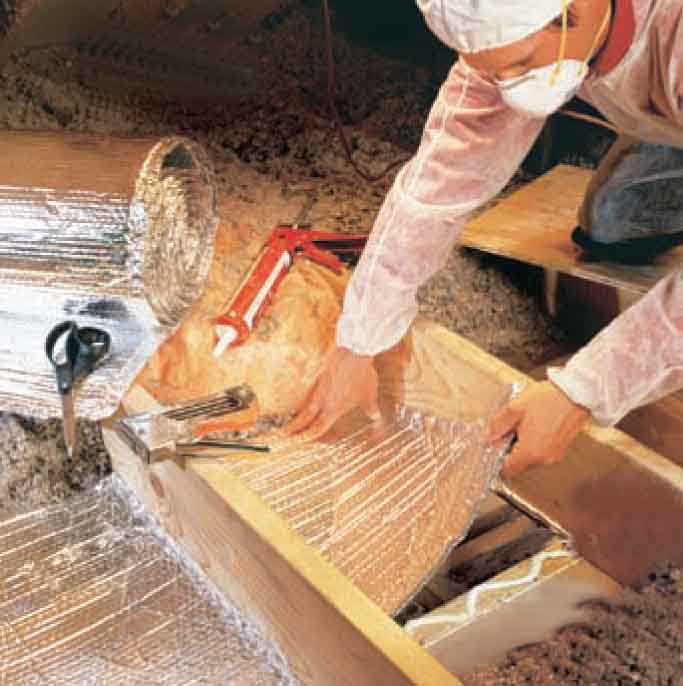Ice Dam Myth #6:
“Sealing Attic Spaces Prevents Ice Dams”
The Truth:
Attic “sealing” is a procedure where an attic floor is sealed to prevent heat loss from warmed areas below.
We applaud sealing as one effective way to help conserve energy, but some experts say its effectiveness as ice dam prevention has been overstated.
Ice dams form because heat still seeps into the attic. Hatches and walls (especially sun-laden exterior walls), and heat sources such as plumbing and heating vents, chimneys, and recessed can lighting, are all attic heat sources.
Typical snow accumulation on a roof is often thinner near the wind-prone ridges and heavier at the eaves, especially on the leeward side of the structure. The snow at the ridge is usually the first to melt away and expose roofing materials. When it does, the roofing surface absorbs the sun’s radiation–the greenhouse effect–which conducts heat into the attic space. The space collects heat and is now warmed whether or not the attic floor is sealed. This creates the classic condition where ice dams will form.
Even solar radiation into the blanket of snow can produce a meltwater condition where it re-freezes at the roof’s edge.

We at Summit are very GREEN minded, and appreciate what ‘green’ improvements better insulation, ventilation, and attic sealing provide. Rarely is a project constructed, however, that has insulation, ventilation, and sealing components implemented that prevents all ice dams and ice formations.
